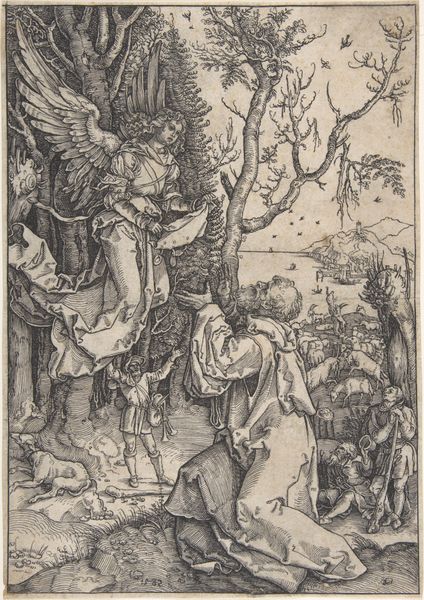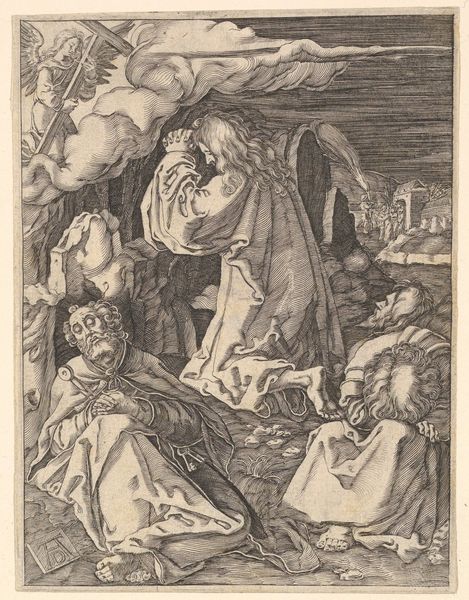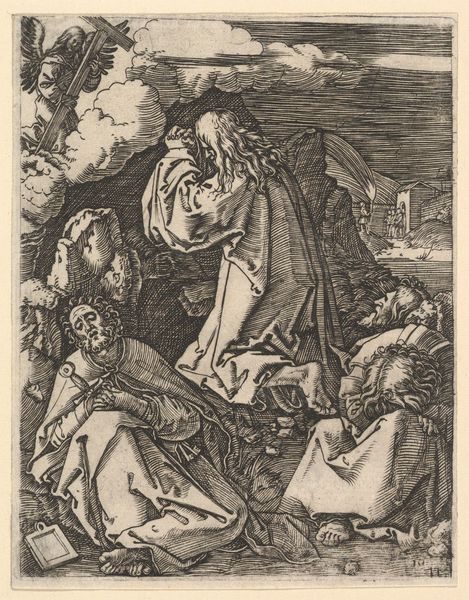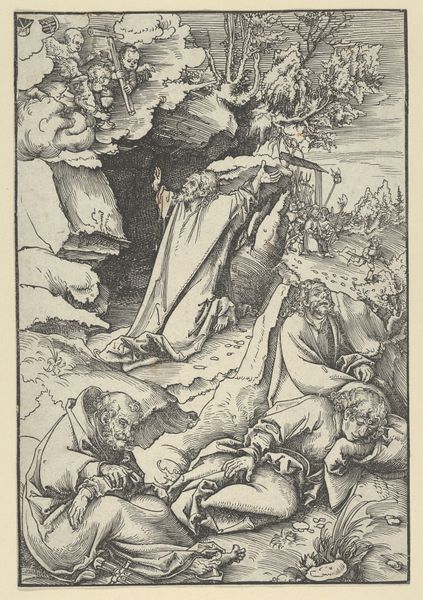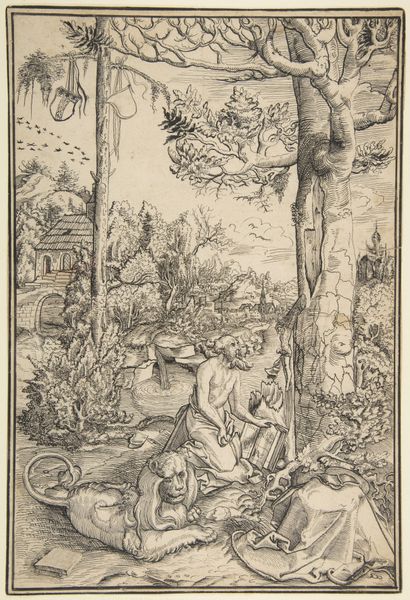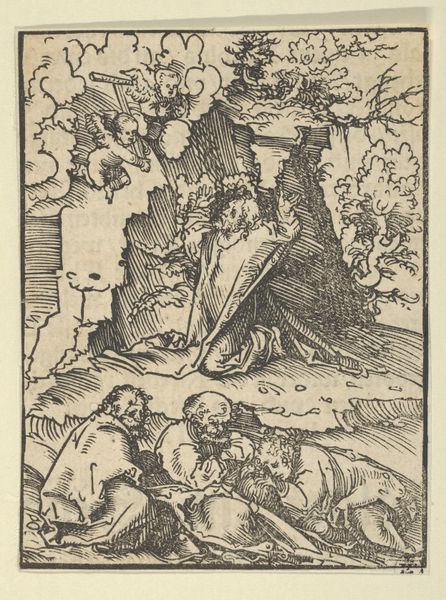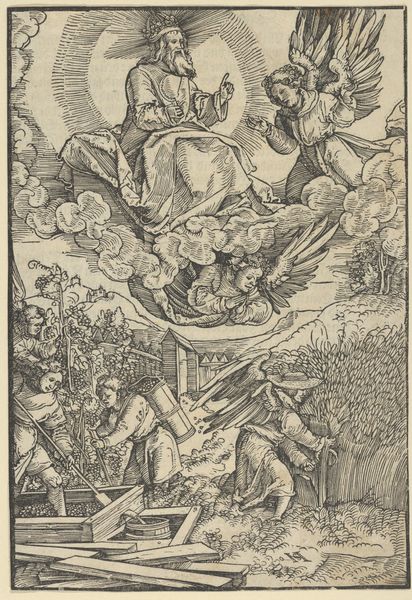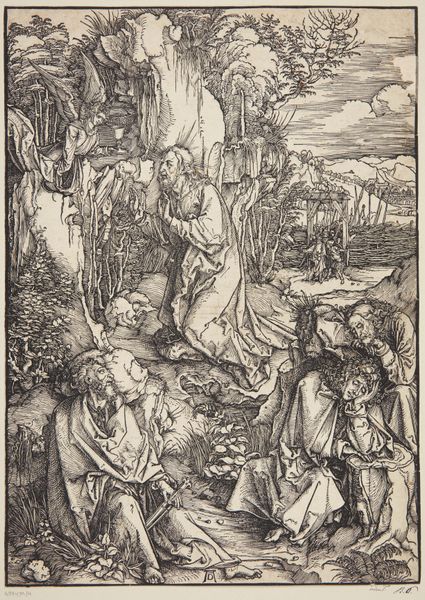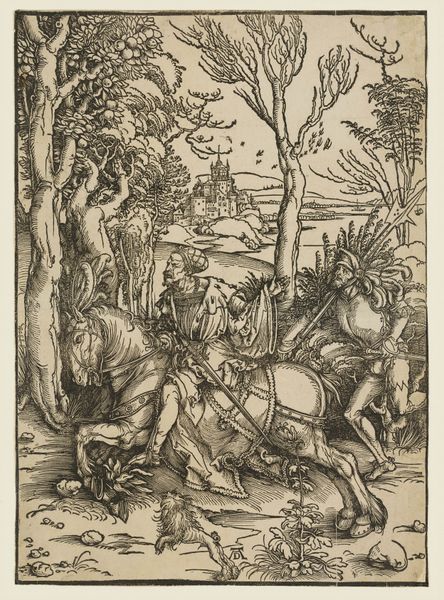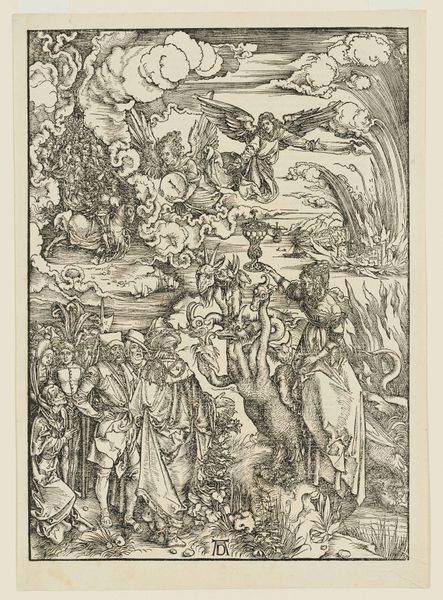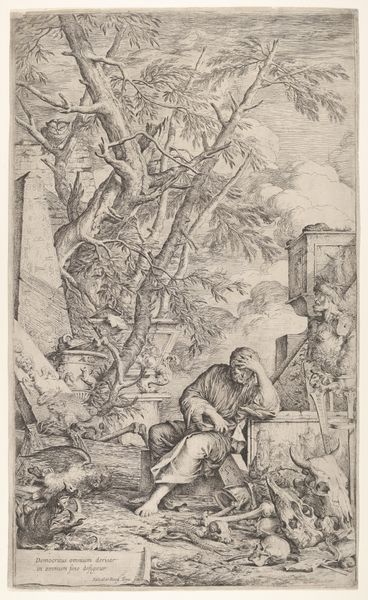
drawing, print, paper, ink, engraving
#
drawing
#
narrative-art
# print
#
pen illustration
#
pen sketch
#
landscape
#
figuration
#
paper
#
ink
#
pen-ink sketch
#
line
#
pen work
#
sketchbook drawing
#
history-painting
#
italian-renaissance
#
engraving
Dimensions: height 297 mm, width 215 mm
Copyright: Rijks Museum: Open Domain
Editor: This is "Angel Appears to Joachim" from 1510-1515, attributed to Marcantonio Raimondi, though its true authorship is debated. It’s an engraving, so ink on paper. I'm struck by how the fine lines create so much detail, especially in the landscape, yet it feels unfinished in places. What do you see in this piece? Curator: I see a fascinating tension between artistic skill and the means of production at play here. This wasn't painting for a wealthy patron, but a print intended for wider circulation. Raimondi's workshop streamlined the engraving process, using relatively cheap materials to reproduce images and disseminate artistic ideas more widely than ever before. Notice the skilled labor needed for hatching the lines to create the shading. Editor: So, you're saying the value isn't just in the artistic skill but in the democratization of images through printmaking? Does that diminish its artistic value? Curator: Not at all. It shifts our understanding of value. This engraving transforms image making into a sort of manufacturing process, requiring many steps. This connects high art to the wider economy. Raimondi wasn't just an artist; he was an entrepreneur navigating a new market for images. Editor: That's really interesting. So, the subject matter is less important than the social and economic factors that led to its creation? Curator: The subject isn’t irrelevant, of course. Religious imagery held significant power. However, by considering the material conditions, we see how this engraving participates in larger networks of production, distribution, and consumption. We see art entangled in the world. Editor: I'd never thought about it that way, I will definitely look into the social context in which engravings were made during the Italian Renaissance. Curator: Precisely! Consider who owned these prints, and how they were displayed or used. It moves us beyond formal analysis toward a deeper understanding of art's place in society.
Comments
No comments
Be the first to comment and join the conversation on the ultimate creative platform.
